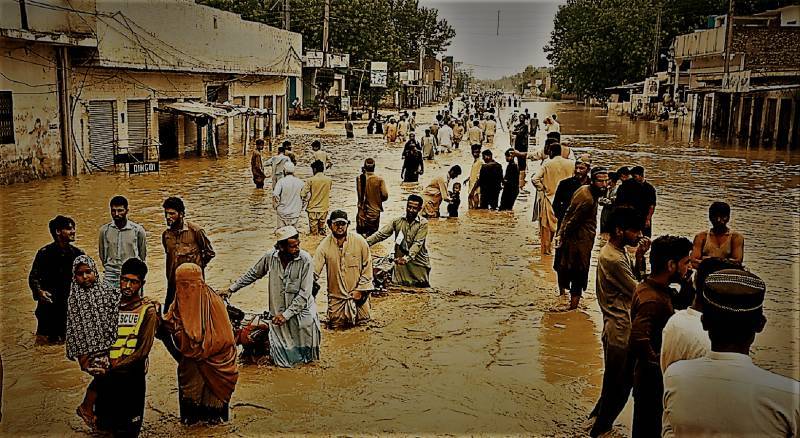
How a change can be this cruel? We have always heard change is an essential part of our lives and it is always considered as a positive element. But, it is also a fact that the slightest change can cause a lot of drawbacks, discomforts and deteriorations.
Climate change refers to long-term changes in global temperatures and weather patterns. It is primarily driven by human activities, especially the emission of greenhouse gases like carbon dioxide from burning fossil fuels and deforestation. These gases trap heat in the Earth’s atmosphere, leading to a gradual increase in global temperatures, a phenomenon known as global warming.
In recent years, drought conditions have intensified due to the compounded impact of climate change. Drought tends to happen due to water scarcity and affects not only agriculture but also access to normal water. Sustainable water management practices include water conservation that consists of the implementation of water efficient systems to reduce unnecessary water usage. When it comes to fresh water, water conversation is playing a vital role because fresh clean water is a limited resource, as well as a costly one to our climate change. To counter this pressing issue, a comprehensive approach is essential.
This approach involves mitigating climate change and preparing communities for droughts. The urgency of addressing increased drought cannot be overstated, as it poses a significant threat to ecosystems, food security, and global well-being. Immediate collective action is imperative to safeguard our future.
Climate change is affecting marine environment at a faster pace causing numerous changes. Marine species are the major components of living organisms on the earth that have dominated nearly 90% of the habitat of earth. As global temperature continues to rise, the impact on marine life is becoming increasingly evident. Rising sea temperatures can disrupt the delicate balance of ecosystems, leading to coral bleaching and the loss of habitats for many marine species.
Another issue is ocean acidification, caused by increased carbon dioxide absorption that makes the ph level in an ocean acidic. The more acidic the ocean is, the harder it is for shell-making species to build and maintain their shells; if acid levels get too high, their shell and skeleton can even start to dissolve. A new model predicts that marine microbes could shrink by up to 30% in the future due to climate change. And some fish species have already altered their geographic range in response to climate change.
Forest covers almost one third of the planet’s surfaces and offers an array of advantages and services to humanity and numerous other species, including commodities like paper and timber as ecological services. Clean water and air, food, necessities, recreation, and environmental services are all provided by forests.
Additionally, forests help people feel connected to the environment and are essential to some indigenous peoples’ existence and way of life. The capability of forests provides fundamental ecosystem services, such as conserving carbon, fresh air and water supply, leisure activities, and wildlife habitat is expected to be impacted by climate change. Forests help in storing carbon in roots, soil and woodland floor is one of the biggest and most significant ecosystem services that forests offer. Cutting and damaging forests strongly affects carbon storage as it collects in the atmosphere.
According to research since 2000, there have been 72,600 wildfires on average per year. That is over twice the yearly average area fired during 1990s. But sadly, the worst of it is still to come. Higher temperatures, longer flooding, and drier greenery are all being brought on by climate change. These factors will continue for years or centuries, which increases the size, regularity and number of wildfires.
The subsequent loss of biodiversity threaten human existence. Due to its importance in making the ecosystem work, biodiversity is very important but difficult to fill and recover when passing. A serious threat to the anthropology system was the loss of the biodiversity that happened on the planet.
Climate change has a paradoxical effect on habitat fragments and contributes harmoniously to the loss of biodiversity at habitat, genetic and species levels. Plus there are many species which are endangered and extinct. This shows that climate change is a serious environmental concern affecting land (plants, soil, microbes, animals, and arthropods) and aquatic biodiversity (water bodies, phytoplankton, coral reefs, and fish) drastically.
The removal of forests contributes to climate change as trees absorb CO2 and release oxygen. Deforestation releases stored carbon back into the atmosphere, exacerbating the greenhouse effect which leads to habitat loss and climate change. Deforestation contributes to climate change because trees absorb carbon dioxide, a greenhouse gas. When trees are cut down, this carbon dioxide is released into the atmosphere, contributing to the greenhouse effect and global warming. It’s important to address deforestation to mitigate the impacts of climate change. Deforestation is the process of clearing or removing trees and vegetation from an area, often for agricultural or industrial purposes. This has numerous negative impacts on our environment. When trees are cut down, they release stored carbon dioxide back into the atmosphere, contributing to the greenhouse effect and global warming.
The consequences of climate change are far-reaching and include rising sea levels, more frequent and severe weather events, such as hurricanes and droughts, and disruptions to ecosystems and biodiversity.
To combat climate change, international efforts like the Paris Agreement aim to reduce greenhouse gas emissions and transition to cleaner, more sustainable energy sources. Efforts at the individual, community, and governmental levels are also crucial in addressing climate change. These efforts consist of reducing energy consumption, promoting renewable energy sources, and adopting more sustainable practices in agriculture and transportation.
Disclaimer: This is part of a Jinnah University for Women paper supervised by Uzma Anis.

